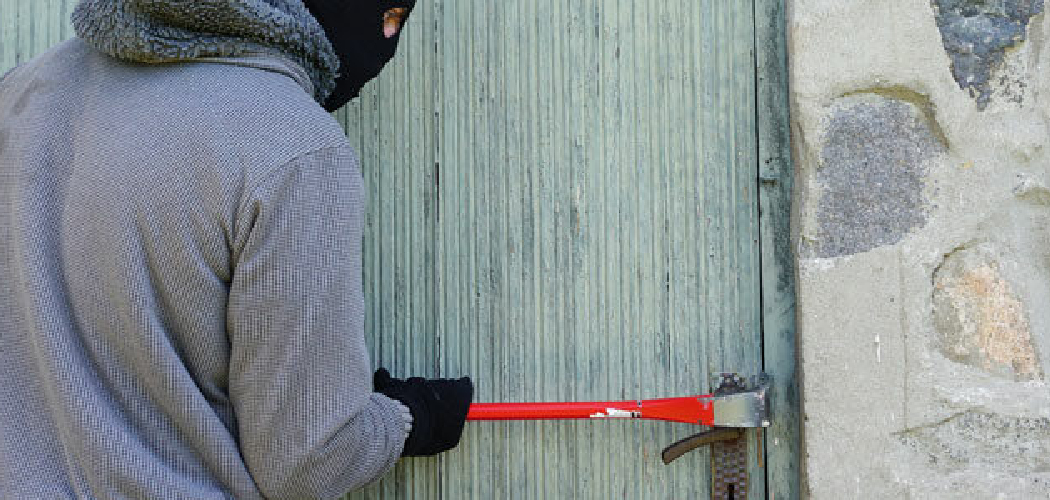A garage break-in can be a distressing experience, often leading to the loss of valuable items and a sense of security in one’s own home. As garages are frequently overlooked compared to other parts of a house, they can become easy targets for intruders. However, with the right preventive measures, homeowners can significantly reduce the risk of unauthorized access. This guide aims to offer practical tips and strategies for how to prevent garage break ins, ensuring peace of mind and the protection of possessions.
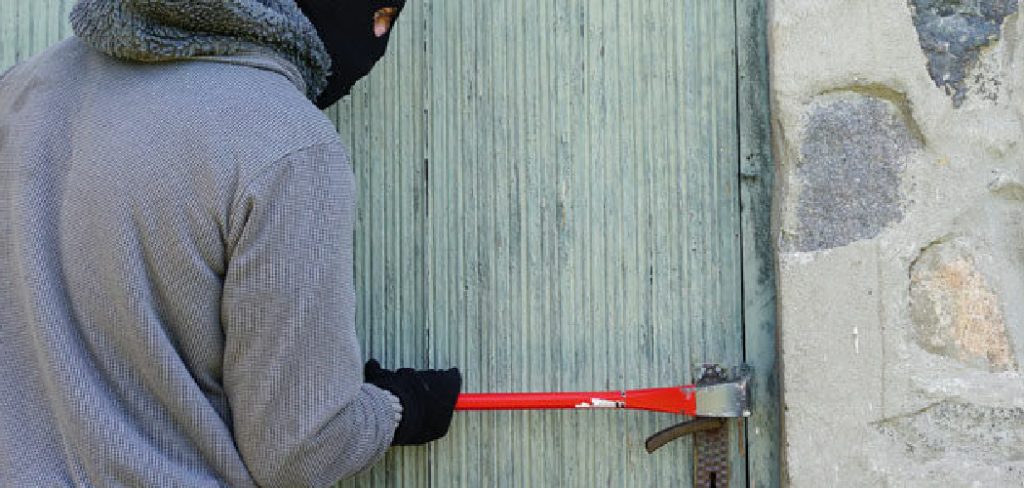
The Importance of Garage Security in Overall Home Protection
Garages often serve as primary entry points for intruders, making their security an integral part of home protection. A secure garage acts as a substantial barrier against unauthorized access, effectively safeguarding not only the valuables inside but also the entire home. Since garages frequently connect directly to main living areas, inadequate security in this space can pose a significant threat to personal safety and property.
By prioritizing garage security, homeowners can close off a potential vulnerability, ensuring that their family’s safety and their property’s security are reliably maintained. Additionally, reinforcing the garage’s security strengthens the overall home security system, deterring attempts that might otherwise exploit this common weak link.
Understanding Common Garage Break-In Methods
Recognizing the techniques often used by intruders to gain access to garages is crucial in formulating an effective security plan. One common method is exploiting weaknesses in the overhead door. Intruders often use tools to disengage the emergency release lever, which is typically accessible through the top of the door using a coat hanger or similar implement. Another method used by burglars involves taking advantage of garage door openers.

Unsecured remote controls left in vehicles parked outside can provide easy access to your garage. Additionally, some criminals attempt to hack electronic door systems by intercepting remote control signals or duplicating codes, especially if the system uses outdated security technology. Finally, side doors or windows without adequate locks or reinforcement may present easy entry points for a determined thief. Understanding these methods allows homeowners to anticipate potential threats and enhance vulnerabilities within their garage systems.
10 Methods How to Prevent Garage Break Ins
1. Reinforce the Garage Door
The primary point of access to your garage is the door, making it a prime target for break-ins. To prevent unauthorized entry, start by reinforcing the garage door itself. Ensure that the door is made of sturdy materials like steel or solid wood, which are harder to break through compared to lightweight materials like aluminum. You can also add a garage door defender—a lockable bar placed across the door—further preventing forced entry. If you have a manual garage door, install deadbolt locks on either side to add another layer of security. Reinforcing the door makes it difficult for intruders to break in quickly, increasing their chances of being noticed.
2. Install Motion-Sensor Lighting
Motion-sensor lights are an effective deterrent against break-ins, especially in dark, secluded areas like garages. Installing bright lights that activate when movement is detected around the garage entrance can scare off potential intruders before they even attempt to break in. Place these lights above the garage door, side entrances, and any windows to cover all angles. To enhance security further, you can connect motion-sensor lights to a smart home system, allowing you to receive notifications or even trigger an alarm when the lights are activated. By eliminating dark spots around your garage, you reduce the likelihood of a break-in.
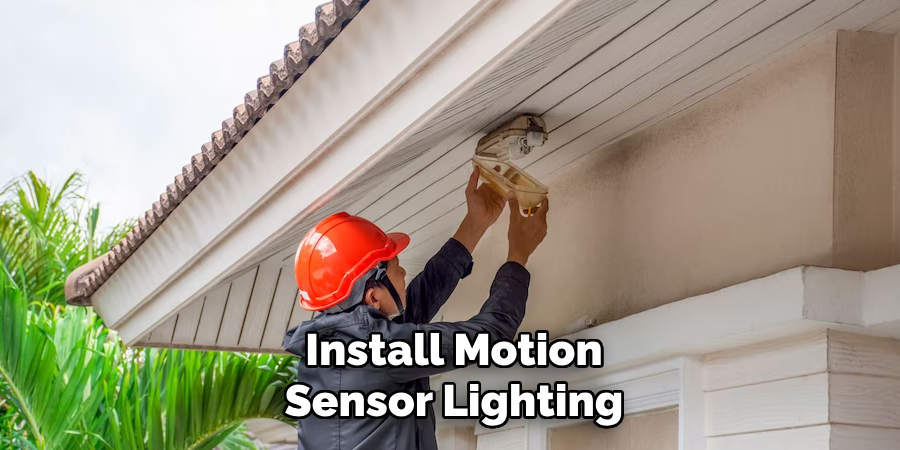
3. Secure the Garage Service Door
Many garages have a side or back entrance known as the service door, which is often weaker and less secure than the main garage door. To prevent break-ins through this entry point, upgrade the locks on the service door to high-quality deadbolts or smart locks. Reinforce the door frame with a strike plate and long screws that go deep into the framing studs, making it more difficult to kick in. Additionally, install a solid-core door, which is harder to break through than hollow-core doors. By securing the service door, you reduce one of the easiest access points for intruders.
4. Cover Garage Windows
Windows in your garage can be an invitation for intruders to scope out the valuables inside. Prevent break-ins by covering these windows with curtains, blinds, or frosted window film to obscure the view. If you want natural light in the garage, consider installing shatterproof or reinforced glass to make it harder to break. You can also install window sensors that trigger an alarm if the glass is broken or the window is forced open. Securing windows reduces the risk of an intruder being able to assess the contents of your garage and plan a break-in.
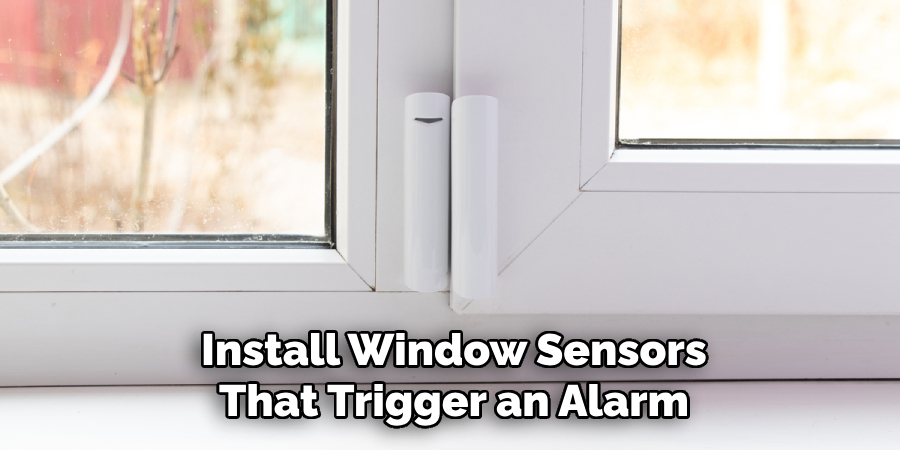
5. Install a Garage Door Timer
One of the easiest ways for an intruder to access your garage is through an accidentally left-open door. A garage door timer can prevent this by automatically closing the door after a set period of time. This is especially useful if you often forget to close the garage after parking or unloading items. Some garage door timers can be connected to smart home systems, allowing you to monitor and close the door remotely via an app. By ensuring the garage door never stays open for too long, you reduce the opportunity for intruders to enter unnoticed.
6. Upgrade to a Smart Garage Door Opener
Older garage door openers can be vulnerable to hacking through simple devices that capture the opener’s signal. Upgrading to a smart garage door opener eliminates this risk by using rolling code technology, which changes the signal after each use, making it nearly impossible to replicate. Additionally, smart openers allow you to monitor and control your garage door from your smartphone, providing alerts if the door is left open or if it’s opened unexpectedly. Some systems can even integrate with home security cameras, giving you real-time video of any activity around your garage.
7. Disconnect the Emergency Release Cord
Many garage doors have an emergency release cord that can be used to manually open the door in case of power failure. Unfortunately, intruders can sometimes use this to their advantage by fishing the cord through a small gap at the top of the door. To prevent this, disconnect the cord or secure it with a zip tie, making it harder to access from the outside. If you disconnect the cord, ensure you have another method for manually opening the door in an emergency, such as a keypad or battery backup system.
8. Lock the Interior Door to Your Home
If your garage is attached to your home, the door connecting the garage to your living space should be treated as a main entry point. Install a high-quality deadbolt or smart lock on this door to prevent intruders from easily entering your home if they manage to break into the garage. Reinforce the door with a solid core and strong framing, just as you would with an exterior door. Adding an extra layer of security to the interior door can buy you valuable time in case of a break-in and act as a second line of defense.
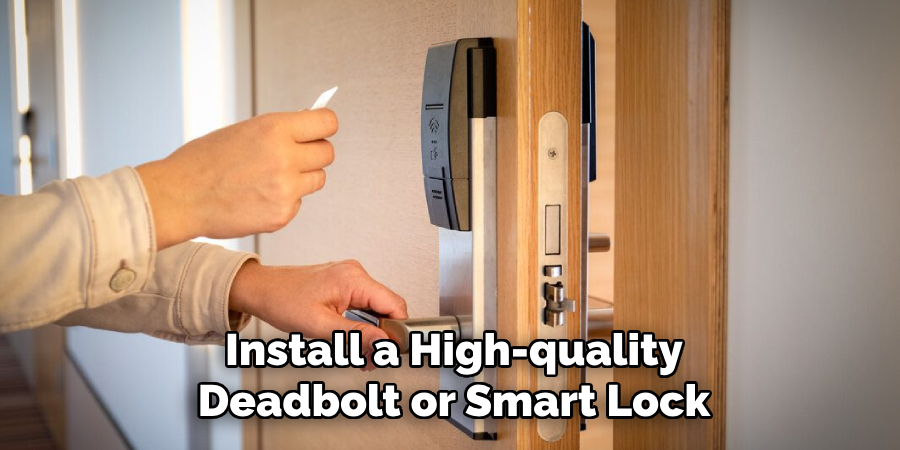
9. Install a Garage Security Camera
Installing a security camera focused on your garage can act as both a deterrent and a way to capture evidence in case of a break-in. Position cameras to cover all entry points, including the main garage door, service doors, and windows. For even better coverage, choose a camera with motion detection and night vision capabilities to monitor the area effectively, even in low light. Modern security cameras can be connected to a smart home system, allowing you to receive notifications and view live footage directly from your phone. A visible security camera can discourage intruders, as they are less likely to target homes with surveillance.
10. Keep the Garage Remote Secure
Many people store their garage door remote in their vehicle, making it an easy target for thieves. If a criminal gains access to your car, they can use the remote to enter your garage. To prevent this, avoid leaving the remote in plain sight, such as on the dashboard or visor. Instead, keep it in a secure location, such as a locked glove box or carry a keychain-sized remote with you. For even greater security, consider using a smart garage opener app on your phone, eliminating the need for a physical remote entirely. By keeping your remote secure, you minimize the risk of someone using it to access your garage.
Conclusion
Preventing garage break-ins requires a multifaceted approach that combines physical security measures, technology, and smart habits. By reinforcing the garage door, securing entry points like service doors and windows, and using advanced technology such as smart garage door openers and security cameras, you can significantly reduce the risk of an intrusion. Regularly reviewing and upgrading your garage security setup ensures that it remains effective against new threats. Thanks for reading our blog post on how to prevent garage break ins! We hope you found it helpful and informative.

